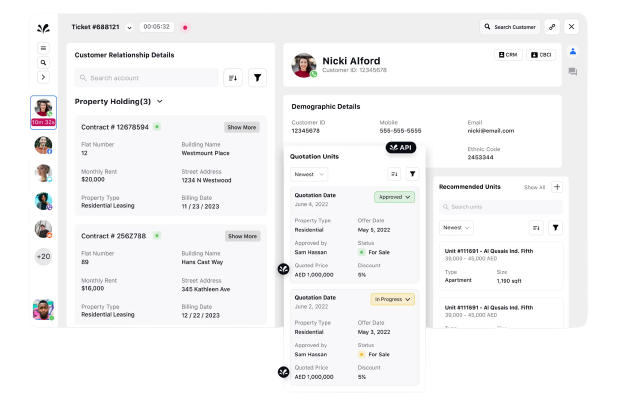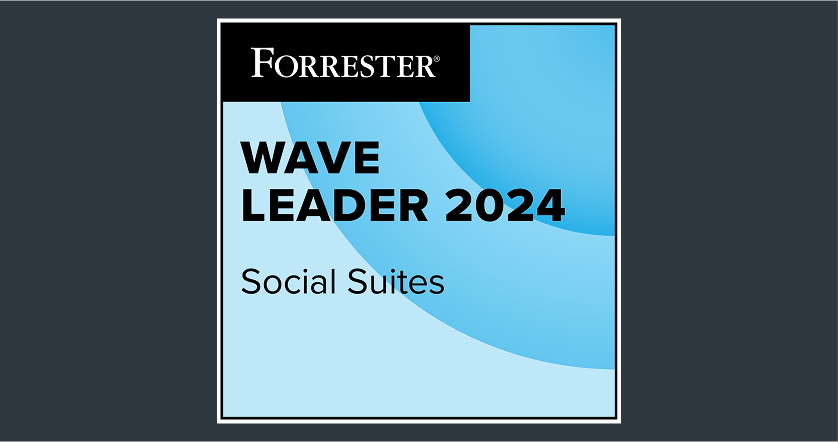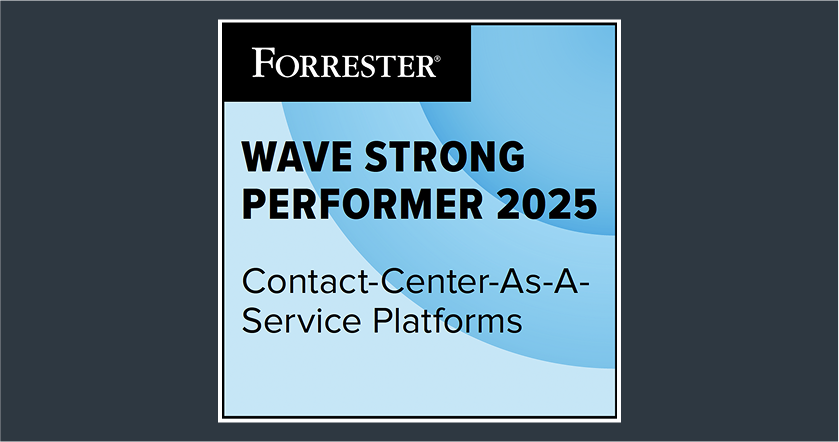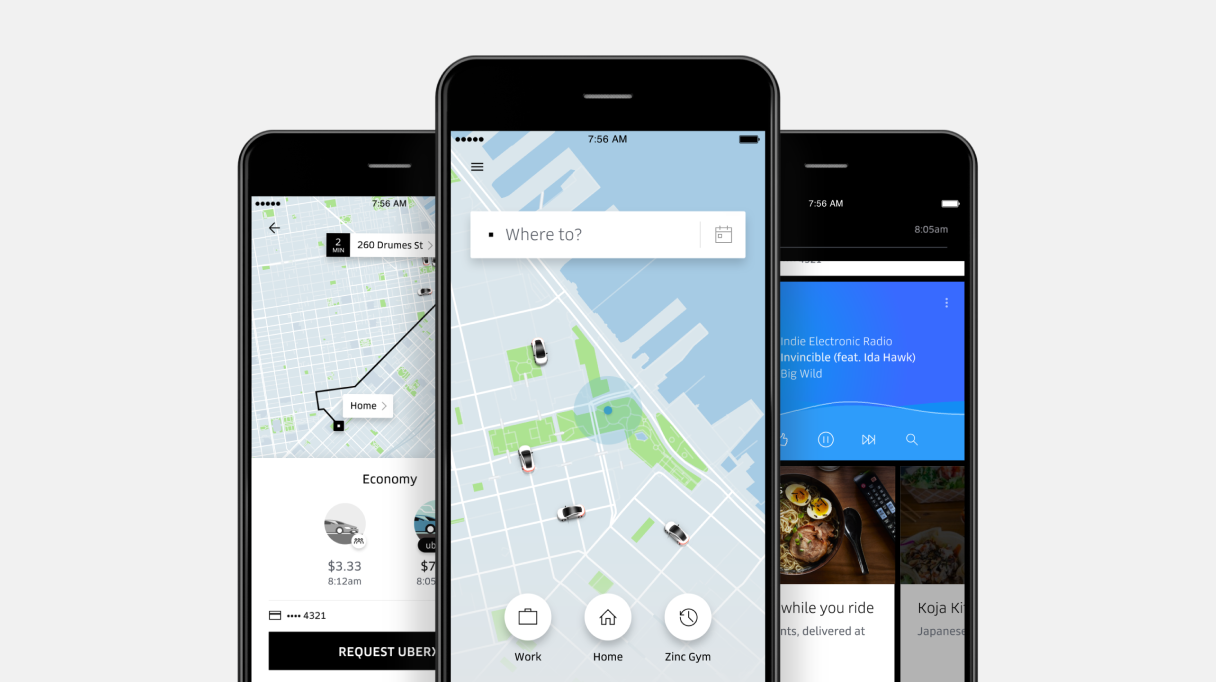- What is an outbound call center?
- Examples of outbound call center
- Top 4 Benefits of outbound call centers
- Key features of outbound call centers
- Outbound call center best practices for your business
- How Honda connected with online car buyers through outbound campaigns
- Turbo-charge your outbound voice campaign ROI by 30% with AI
What is an outbound call center?
An outbound call center is a business unit or facility that makes outgoing calls to customers and potential prospects on behalf of the company. Primarily used for sales, outbound call centers also conduct surveys, gather market research data and facilitate follow-up calls for information updates or payment reminders.
You can run an outbound call center both locally and remotely. In both, agents have a contact list to reach out to and use CRM systems to track and manage interactions.
In today’s competitive landscape, relying on inbound communication only is not enough. Hence, businesses leverage outbound calling to keep their customers, leads and prospects informed about their products, services and campaigns and more.
Additionally, customer-centric businesses utilize outbound call centers to provide proactive customer service, notifying customers about any service updates that may have a direct or indirect impact.
Examples of outbound call center
Unless your number is registered with the National Do-Not-Call (DNC) list, you must have encountered at least one outbound call. While many businesses run outbound call centers for different purposes, here are some common examples.
Telemarketing
Telemarketing is the process of collecting customer intent, data and preferences to gauge their potential of becoming a qualified sales lead.
Outbound call centers that run telemarketing make cold calls to customers to inform their offerings and schedule appointments for sales calls or meetings upon getting consent.
Financial services, real estate, hospitality, education and healthcare companies extensively run telemarketing as a primary strategy for lead generation. From the business perspective, telemarketing plays a critical role as it vets leads thoroughly before pushing them to sales, thereby saving time and streamlining the sales process.
Telesales
Telesales is the process of selling products or services over a voice call. Outbound call center agents contact prospective customers who have shown interest in their products or services over the phone.
Financial services, retailers, real estate, healthcare, hospitality and personal care companies rely on telesales to generate business, upsell or cross-sell.
Collection calls
Collection calls are the classic use case of outbound call centers wherein the loan department of banks and financial services reach out to debtors for equated monthly installments for home loans, car loans, personal loans, etc.
Such outbound call centers are skilled with debt collection calls and are often outsourced. Lenders also deploy outbound IVR calls to remind their customers about upcoming payments.
Learn more: What is an IVR system & how to use it?
Survey and feedback calls
Outbound call centers help businesses conduct market research before any product release or campaign launch. Similarly, banks, airlines and automobile companies often use outbound call centers to survey service standards and collect feedback.
Today, feedback calls have been primarily automated through IVRs and text messages to free up agents for more critical query handling.
The customer survey and feedback calls often build a base for sales, upselling and cross-selling opportunities.
Proactive customer service
Businesses often face challenges concerning delivery, payment failure, service outages, etc. Customer-centric companies heavily utilize outbound call centers and run automated outbound campaigns to notify customers about unprecedented issues.
The approach portrays businesses in a good light and significantly reduces the inbound call volume initiated by unhappy customers.
Outbound call center vs. inbound call center
Both inbound and outbound call centers have their own unique functions and purposes. While the nature of the call is the key differentiator between them, here are the other top differentiators you should know.
Target
Inbound and outbound call centers perform entirely different tasks to achieve clearly defined targets. Inbound call center agents work on the support side and strive to deliver a positive customer experience with a clear focus on efficient call handling and issue resolution.
In contrast, outbound call center agents don’t have to attend to incoming customer calls. They aim to increase sales, generate more leads or offer proactive service.
Tools
If you run an inbound call center, routing incoming calls to suitable agents based on their availability and skill is vital. So, having a robust mechanism for call routing is essential to streamline the process and optimize performance.
However, in outbound call centers, number of calls made per day using CRM matters the most. So, you must have an auto-dialer to avoid the tedious manual dialing process.
Dive deeper: Call center technologies and tools
Key Performance Indicators (KPIs)
Since both inbound and outbound call centers function differently, the KPIs to track their efficiency naturally differ. In inbound call centers, you can measure the following KPIs to reflect efficiency:
average hold time
In outbound call centers, KPIs like connection rate, lead conversion rate, speed to lead and cost per acquisition stay on top of call center supervisors’ priority.
Learn more: 10 Important call center KPIs to track
Top 4 Benefits of outbound call centers
As competition increases and channels multiply, you must reach out to customers to stay relevant, focusing on building relationships, not just sales.
Outbound call centers do both. Let’s see how.
1. Proactive lead generation
Customers are more likely to purchase from somebody they have heard from than someone who never reached out.
B2C businesses, particularly financial services, real estate, healthcare and education providers, rely heavily on outbound call centers to reach more potential customers and generate leads.
2. Memorable support experiences
It's normal for customers to reach out to businesses when they face any difficulty. But when it happens the other way around, like businesses checking in if customers are facing any issue with their products or services, the experience becomes unforgettable.
Customer-centric organizations, particularly players from the automobile, hospitality and Fast-Moving Consumer Durables (FMCD) industries, deliver distinctive support through outbound call centers and ensure customer satisfaction.
Pro tip: Today outbound voice solutions with a built-in proactive listening feature can help you listen to billions of customer conversations on different platforms and detect complaints proactively. It lets you personalize your response and offer proactive support at the right time.

3. More conversions with productive agents
Similar to inbound call centers, your outbound call center's success is heavily dependent on the level of automation you have. While auto-dialers and organized contact lists are table stakes, your agents can bring personalization and empathy to the conversation if you equip them with a contact center as a service (CCaaS) solution that offers deep integrations, in-depth analytics and contact center AI.
4. Better upselling & cross-selling
Outbound call centers are beneficial when you upsell or cross-sell something post-purchase. Through personalized conversations, outbound call center agents can skillfully offer complementary products or upgraded services that align with the customer's needs and preferences.
The approach helps both in enhancing revenue streams and building deep customer relationships.
Key features of outbound call centers
Outsourcing outbound call centers is not uncommon. But if you run an outbound call center or plan to have one, choosing the right solution is vital.
Here are a few features critical to any outbound call center that you can’t afford to overlook.
Auto dialers
Simply put, manual dialing is painful and has become outdated. It even directly hurts agent productivity when it lands on voicemail or doesn’t connect. For this reason, outbound call centers extensively use auto-dialers.
Auto dialers automatically bulk-dial several numbers in the least amount of time — eliminating the manual effort of dialing number after number and possible errors. Auto dialers save time, process call data and minimize cold transfers and agent idle time — improving contact center ROI and productivity.
Go beyond: Use predictive dialers to forecast agent availability and multiply your call connect rate
Unified view
Having a dashboard aggregating data from all touchpoints in one place is extremely important.
A unified view of the customer makes the agent fully aware of customer details, interaction history and scope for a personalized conversation.

Good to know: Today, agents’ desktops are fully customizable and use AI to assist agents in real time while providing a complete history of customer interactions across channels. An AI-powered agent desktop solution provides a bird’s-eye-view of customer details, past interactions and next-best actions in one unified view so your agents can deliver quick, context-rich answers.
Channel switching
Sometimes outbound call center agents need to follow up a call with an email or text message to send an invoice, feedback, collateral or any other information.
A modern outbound call center solution lets agents seamlessly switch channels so that they to do more and juggle less.

Analytics and reporting
Outbound call center solutions have in-built analytics and reporting capabilities that help you have a bird-eye view of your call center operations. You can analyze the pattern in the critical outbound metrics, monitor campaign-level reports, assess each agent’s performance and identify gaps.

Curious to learn more? Read all about measuring call center productivity
Call monitoring
Features like call monitoring and screen recording have become indispensable for outbound call center supervisors, especially during high-intent conversations.
Plus, most outbound call center solutions offer call recording functionality too, which helps you stay compliant and use the recording later for training and quality monitoring.
Outbound call center best practices for your business
You have a decent outbound call center solution and a team to run outbound campaigns. But do they guarantee success?
While success in the outbound call center scenario is subjective, following the outbound calling best practices, you can significantly improve your outbound call center performance.
Cleanse your data thoroughly
Incorrect, duplicate, poorly formatted data can cause more damage than you think. It’s highly recommended that you obtain structured data based on demographics, regions and intents from a reliable source and that the customers in the list consent to receive sales and marketing calls. Furthermore, arranging your customer data according to the stages of the sales funnel empowers your agents to pitch tailored solutions in a personalized manner.
Conduct regular agent training
Not only should your agents be trained on how to use the outbound call center tools, but they should also master the art of personalized outbound calling. Training your call center agents to utilize data points for ideal prospecting establishes a foundation for successful interactions, regardless of immediate conversions.
Also, agents skilled at active listening and objection handling can foster more informed and relevant interactions turning potential barriers into opportunities for engagement.
Foster a supportive environment
Reaching out to customers with a constant fear of rejection makes outbound calling a daunting ask. In your outbound call center, equip agents with all the necessary tools to simplify the calling process. For example, a well-written script, a powerful auto dialer, call records and continuous feedback will help your agents to improve.
Call barging: During difficult situations with annoyed callers, with an AI-powered voice solution, supervisors can watch conversations in real-time, get alerts when help is needed, and barge in with suggestions without disrupting the user experience.
Define call volumes and expectations
Agent burnout is real. Be it inbound or outbound call centers. You must clearly convey your expectations to the team and define acceptable and unacceptable standards (while being reasonable about it) from day one. This way, the agents and you both stay on the same page.
Learn more: How to manage call-center stress and become a happier agent
Stay vigilant on metrics
Set up KPIs for the team and monitor calls regularly and thoroughly. Monitoring KPIs such as connection rate, call duration and handling time, answering machine detection rate, agent pause time, call quality and more will help you stay on top of your outbound call center operations.
Now that you are aware of the benefits and features of outbound call centers, let’s discuss a real-life case study that showcases the business benefits of sound outbound calling.
How Honda connected with online car buyers through outbound campaigns
Who hasn’t heard of Honda? But did you know there was a post-pandemic time when the automobile giant struggled to connect with modern buyers owing to their scattered, siloed teams and processes? Read on to hear the full story.
Honda’s challenges:
Connecting authentically with the new generation of online car buyers on both voice and digital channels
Moving all customer engagement data to one unified platform for seamless and personalized outreach
Ensuring proactive communication through voice and digital channels for a unified customer experience
Solutions:
Leveraging Sprinklr’s outbound voice capability, Honda achieved seamless customer engagement whenever its online car sales website, Honda ON, gained traction.
Honda could proactively establish outbound connections with website visitors, effortlessly initiating outbound communication.
The timely communication was facilitated through a unified customer experience platform, streamlining the process and ensuring personalized interactions.
Outcome:
Sprinklr Service became instrumental to Honda’s online car sales website’s success.
Today, the Honda team maintains round-the-clock vigilance, listens to the voices of people 24x7 and proactively engages in relevant conversations. This is made possible through seamless outbound voice and digital interactions, all managed from a single, unified customer experience platform.
Our goal is to connect authentically with this new generation of car buyers. This means we listen to the voices of people in the world and proactively engage in relevant conversations. Having a single workflow across channels — from phone to social media to live chat, chatbot, and voice — enables a true omnichannel contact center.
Yoshiaki Inoue
Chief of Honda ON
Honda
Turbo-charge your outbound voice campaign ROI by 30% with AI
Businesses usually struggle with coordinating their outbound call center processes because they lack an omnichannel collaborative outbound calling solution.
Sprinklr’s outbound contact center software helps businesses of any size run outbound voice campaigns more efficiently and effectively. Harness the power of AI to transform scattered customer data from 30+ channels into actionable insights that your support and sales reps can leverage to drive more sales and satisfaction for your company. Thrive with:
Automated Dialer to simplify call scheduling and multiply outbound call volume
Sentiment analysis and scoring to detect customer sentiment during calls using AI-led analytics
Real-time analytics to obtain real and projected performance metrics for each agent’s activity and resolution data
Frequently Asked Questions
The two types of outbound calls are:
Sales Calls: Sales calls involve reaching out to potential customers to introduce products or services and persuade them to make a purchase.
Service Calls: Service calls focus on providing valuable information, issue resolution or follow-ups to existing customers.
Thank you for contacting us.
A Sprinklr representative will be in touch with you shortly.
Contact us today, and we'll create a customized proposal that addresses your unique business needs.
Request a Demo
Welcome Back,
No need to fill out any forms — you're all set.







